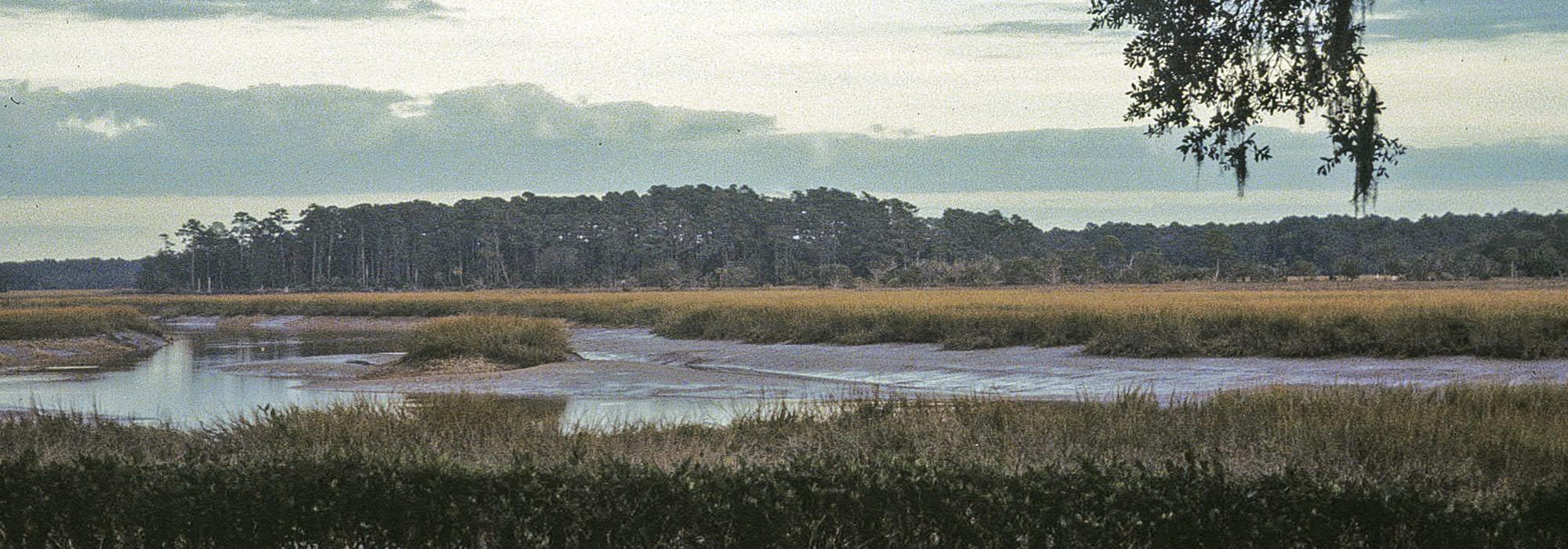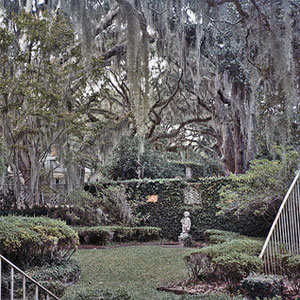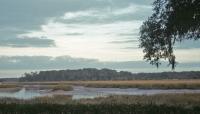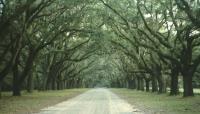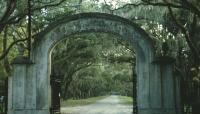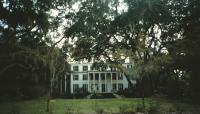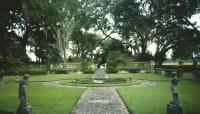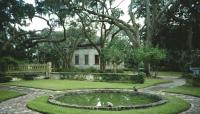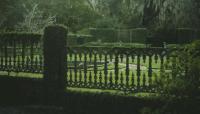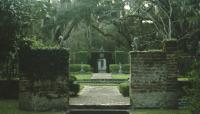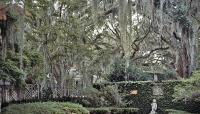Landscape Information
This 822-acre site was once the plantation of Noble Jones, an early colonist and contemporary of James Oglethorpe, who planned the city of Savannah. Noble was granted 500 acres on the Isle of Hope in 1736 to build a fortification upon the Skidaway Narrows. The historic site features the ruins of his circa-1745 tabby, fortified house, approached through a 1.5-mile long allée of more than 400 live oak trees.
The plantation originally grew corn, rice, indigo and exotic rare fruits, with mulberry trees planted for the propagation of silkworms. Successive heirs used slave labor to grow and harvest cotton at Wormsloe in the 19th century. After many years of indifferent management, the estate was inherited by George Wimberley Jones De Renne in the 1830s. He built Wormsloe House and his heirs continued to develop the estate with a Neoclassical library building, the oak allée, and three interlocking ornamental gardens designed by Augusta de Renne. A dense oak and old-growth pine forest with nature trails edges the property. The family transferred the majority of the estate to the Wormsloe Foundation in 1961, while retaining ownership of Wormsloe House and approximately 50 acres around it. The site was transferred to the State of Georgia in 1973, the same year in which it was listed on the National Register of Historic Places.



